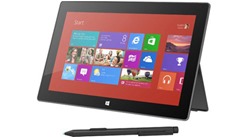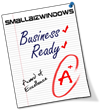The central, yet unplanned theme at Storage Field Day 3 in Westminster, Colorado last month was flash storage, and specifically, the use of flash memory in any way, shape, or form to accelerate data access.
As with any nascent technology, there are many lines of thought about how to best accomplish this, and resultantly, there is a lot of innovation around flash storage even today.
What was quite cool was watching and listening to the sponsors at SFD3 telling us about the work they were doing to get us to a mostly Flash storage world.
From what I learned over there, flash-based storage is moving from POC models, and niche, and esoteric uses to becoming very mainstream.
From hardware to software, from appliances to basic components, flash memory storage is making waves. More information on Storage Field Day, including sponsor presentations, can be found here.
This seismic shift in storage is already here, what with almost all mobile devices utilizing them. Understandable, you may say. For which I will agree, based on the smallish form factors of those aforementioned devices.
However, what about larger computing devices, those which have the enclosure volumes to contain spinning disks. What about them?
At this time, I realized I would have to get my Storage Royalty involved. And as usual, they came through impressively.
The AbsoluteQuestion
“What do you think the role of hard disk storage will be in 5 years, in
The answers, in no particular order:
Rick Schlander
Rich Schlander is a veteran of computing, and familiar with both Microsoft and non-Microsoft computing in the datacenter
I think that we will see a push to move more "long term online storage" to mechanical drives by that time. I think that within a 5 year span, we will see flash as the primary placeholder of all enterprise data with spinning disks as more of an "online vault" to be used for quick recovery and DR. I think that one of the main drivers behind this will be SaaS application delivery from PaaS platforms.
As for SMB's, I think that the move towards more SaaS based applications will be a huge driver of removing remaining HDD's from this arena. As for personal computers, I don't see much of an install base for mechanical drives by that time due to the reduced cost of flash and desktop OS's will demand faster throughput from the local storage.
Rick Schlander is a vExpert, NetApp Certified Data Administrator, and the Minneapolis & Rochester VMUG Leader
Enrico Signoretti
Enrico is a vExpert, and quite conversant with datacenter, storage, and virtualization.
In the B & C categories we will see only flash.
On the DC side we will see a new next generation hard drive (I heard it from a Seagate representative ranting about the future… and it doesn't look too crazy to me).
The NG hard drive will be equipped with a small amount of flash but it's not the "ordinary" hybrid drive, its functionality will be controlled by APIs!
You won't have a fast or slow drive but a drive that can change its behavior: APIs will allow you to manage the usage of SSD and the mechanical part of drive (even the rotational speed!).
This kind of drive will be used for a wider range of applications ranging from archiving (SSD could maintain the blocks allocation table with the disk stopped to save power) to relative high performance (the SSD could be used as cache or as an auto-tiering mechanism). On the SSD you can save indexes, hash tables, FAT, metadata, crypto keys, and pieces of applications maybe…
This hard drive could also be useful in the design of next generation hybrid arrays…
Entrepreneur and IT consultant Enrico Signoretti is at the intersection of virtualization and storage, and gives us a unique perspective into not only what we have today, but also what’s coming next. He blogs at Juku.it
Calvin Zito
Calvin Z. is The HP Storage Guy, with his experience spanning over a couple of decades in storage.
There clearly are benefits to using flash-based solid state disks (SSD) over hard disk drives (HDD). There are a few key factors that will drive adoption regardless of the environment:
-
SSDs already has a significant $/IOP advantage over HDDs. For customers that have performance as a key requirement, they’re already looking at SSDs and flash. But obviously screaming performance isn’t the only criteria.
-
Another measure is the tried and true $/GB. Many customers use this as a starting point when evaluation their storage options – though using only one criteria to pick any solution often results in bad choices. HDD has still has a significant $/GB advantage over SSD and will for some time.
Customers need to make tradeoffs between maximizing $/IOP or $/GB. That typically means that for the datacenter and local/small servers, they’ll have a mixed environment of SSD and HDD. This leads me to four architectural requirements that we think are critical for flash-optimized designs:
-
Performance acceleration: Eliminate system bottlenecks
-
Efficiency optimization: Extend life and utilization of media
-
System resiliency: Provide constant application access
-
Data mobility: Federate across systems and sites
At HP Storage we see startup vendors addressing system bottlenecks and efficiency, and legacy storage vendors meeting resiliency requirements with their tier-1 storage. But that’s far short of addressing all four requirements. We think all four need to be addressed by any flash-optimized array.
Calvin Zito, known as @HPStorageGuy, has worked for HP Storage since 1990, and writes the most read hp.com blog, Around the Storage Block. http://hpstorage.me/ATSB-blog He can be reached at hpstorageguy@hp.com
Val Bercovici
Val B. leads strategic planning for NetApp, one of the global Top-5 companies in storage.
In 5 years:
Hard disks will play their most dominant role in the data center, as a big intermediary tier between Solid-State (mix of NAND & PCM) Storage and Tape (for Big Data Archives).
Local Small Servers will use mostly NAND or PCM solid-state storage due to ruggedness, superior failure rates and simpler FRU management. That will leave little space for hard disks in this deployment scenario.
There will be no hard disks in personal devices (desktops & laptops) just like there are none in tablets and phones today. Similar ruggedness and failure rates advantages of solid-state storage are the reasons.
#1 above will store the long-tail of data for #2 and #3 via Cloud Gateways and Cloud respectively :)
Val joined NetApp in 1998 and leads the Strategic Planning Team within the office of the CTO. Working with customers, analysts, and alliance partners, Val focuses on next-generation research projects and is responsible for NetApp’s product vision. As an early Big Data adopter, Val chairs the Enterprise Data Architecture Track of the Hadoop Summit. Val also introduced the first Cloud Standard to the industry as chairman of SNIA’s Cloud Storage Initiative, whose mission is to foster the growth and success of the cloud storage market. Previously, Val served as the vice-chair of SNIA’s Solid-State Storage Initiative. Val has over 25 years of IT industry experience spanning NCR (AT&T) and Cognos (IBM), with 12 years in storage at EMC and NetApp. Previously, he worked as a consultant to private industry and government. Val holds a Bachelor of Science degree in Computer Science from the University of Ottawa.
Matt Leib
Matt is a veteran of storage and virtualization.
I enjoy these conversations when it’s purely gazing into the crystal ball, because I’m not necessarily any more clued into manufacturing predictives than anyone else. I am, however, an employee for an organization that leverages the power of solid state discs for IO.
As an employee for Nexenta Systems, we use both spinning disc and solid-state disc in a tiered scheme in our common methodology, as ZFS has most regularly implemented. Of course, the flexibility of ZFS doesn’t lock in to a specific configuration; by that I mean, one may configure all SSD for pure IO configurations, or even all spinning disc in a use-case that needs very little in the way of IO. The point being, I configure appliances on a daily basis that lean on the power of both spinning disc and solid state regularly and have developed a familiarity with the SSD industry as it is, and as such, feel that maybe I have some insight into where we may be going into the future. That being said, let’s dive in-
In the data center, I am already seeing many organizations who’ve no desire to invest at all in spinning discs, even in their low latency use-cases. They see spinning disc as dead technology, and don’t understand even in slow disc cases why anyone would invest in ancient tech. On the other hand, and still today, the cost differential presents quite a barrier. This difference will continue to shrink, in my opinion, to where I believe even the smallest organizations will see the benefits outweighing the negatives in a situation like expressed above. Where pennies per gigabyte will be close enough, and mean-time-between-failure rates will surpass spinning disc, so as to make the logic behind spinning disc, as reasonable as, for example, cranks to start a car, or party line telephone calls.
Local servers may be a little slower to adopt this, but I do feel that we’re going the same way. And in the same manner, I’m seeing many servers adapting their internal storage to a solid-state form. Local storage may be, at the moment an admittedly more expensive and smaller, but this is changing. The size of discs is growing, and though prices are still relatively high, only in comparison to today’s disc prices. They’re dropping daily, and at this level the cost really shouldn’t be the issue. In fact, one of the reasons we used to use local disc was raid level, not for redundancy only, but with the high IO levels of SSD, certainly, we’re not reliant on spindle count. Maybe rather than a 4 disc raid 6, we’d only require a 2 disc mirror for redundancy, thus mitigating some of the cost, as well.
And, in the final use-case, I’m really hard-pressed to satisfy my desire for ample local disc in a desktop workstation with SSD. Were I to be buying a non-laptop today, and to be fair, I work about 90% of the time from a laptop, I would build out with a couple of largish SSD’s, and then connect for the lion’s share of my storage to my NAS (which to be fair is a NexentaStor device). I still feel the future is the same, and well defined for spinning disc regarding desktop machines. Only the dinosaurs will have spinning discs. We will likely regard these machines as we do with nostalgia, our old NetWare boxes, or our first PC XT’s.
So, what happens in the interim? Will there be a place for the “Hybrid” disc? We’ve seen a place for these in laptops, where 2.5” discs which have been able to be augmented by a small amount of RAM which facilitates a pseudo disc tier within the physical disc architecture, and creates a much faster disc relationship. But, will we be able to realize this in larger sizes in all architectures before the full SSD overtakes the spinning disc entirely? My belief is that we will not.
Another consideration to lay thought towards is that of the ultra-fast PCIe ram card, like today’s FusionIO or Intel 910 card. These remove the card from the SAS or SATA bus, placing them in the PCIe socket to further improve IO throughput. They tend to be placed in appliance only Flash devices, or augment individual solid-state local device appliances. They’re wonderful, however, they tend to be more expensive on a dollar-per-gigabyte level than SSD disc in equivalent sizes. I am not sure what the future brings for these devices, but I anticipate that we’ll see parallel growth in these markets.
Ultimately, my prediction is that we’re at a tipping point, and that the industry is turning towards SSD in a very big way. Commodity disc and enterprise class regardless, will, I think, overtake spinning disc entirely, and I actually think that we’ll be seeing that sooner than the 5 year mark.
Matt Leib is a long time virtualization architect with years of VMware and Citrix implementations. He has years of evangelism on subjects ranging from Cloud, DR and VDI to Big Data and enterprise application virtualization. He is an advocate of Open Storage, working at Nexenta as an SE covering the entire midsection of the country and the western half of Canada. Additionally, Matt is the Communications Director for the vCommunity Trust.
The AbsoluteViewpoint
Hard drives, the spinning disk kind, seem to be reaching the end of their run as the primary storage option for computing devices.
Right now, I cannot think of any mobile device that utilizes a hard disk drive, and I believe that development will continue spreading out to mainstream computers, trickling out over the summer and becoming a deluge right on time for the Christmas and holiday season this year.
However, will spinning disks be completely abandoned?
The wildcard here is the memristor, which can serve two masters: storage and compute.
This august panel thinks so, and absent any data to the contrary, I would have to concur.
Exciting times ahead.
What do you think?
Comment here or email me at john [dot] obeto [at] absolutevista [dot] com
© 2002 – 2013, John Obeto for Blackground Media Unlimited












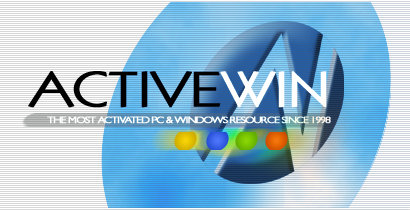







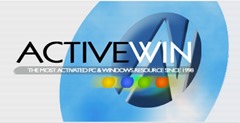




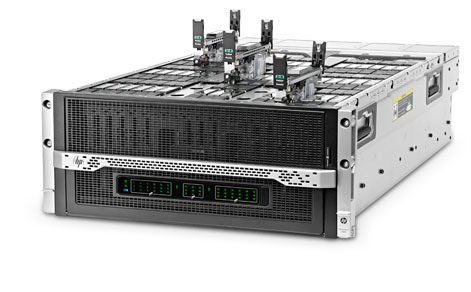 HP Proliant Moonshot
HP Proliant Moonshot
